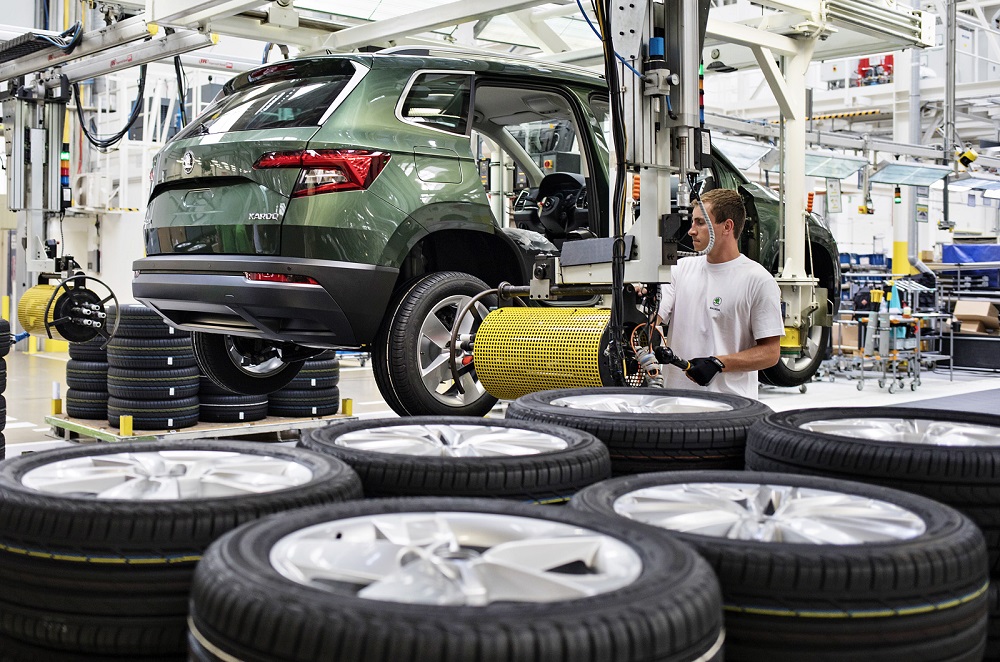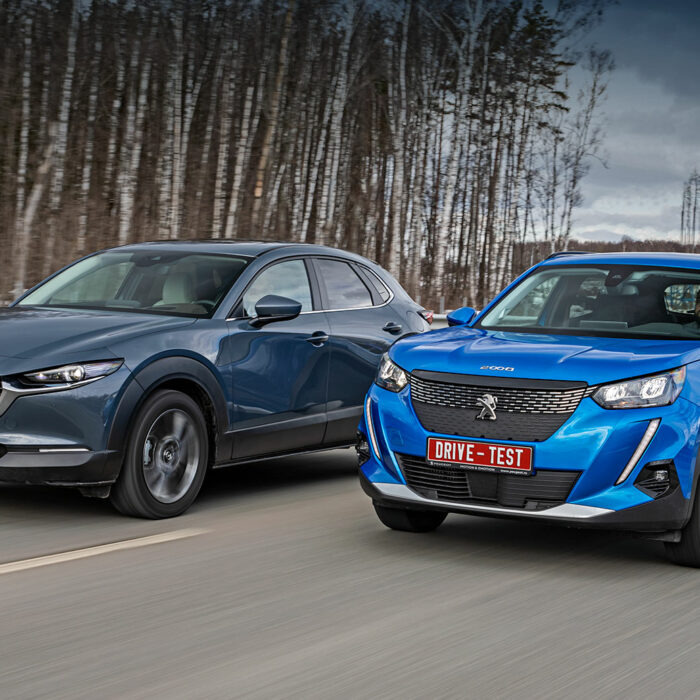The Czech carmaker, which produces cars under the Škoda brand, was founded in 1895. The company is headquartered in Mlada Boleslav. Škoda Auto also produces bicycles (actually, it all started with them). Let’s try to understand how it turned out that the production of Škoda cars is part of the Volkswagen Group today.
How the first Škoda car appeared
In the Kingdom of Bohemia, which was part of Austria-Hungary, there were mechanic V. Laurin and bookseller V. Klement. Both were called Václav. Václavs were patriots and once came to a common idea to produce bicycles with the name “Slavia”. In principle, the idea was not bad, Europeans loved bicycles and the demand for them has constantly increased. Laurin & Klement Co (or L & K) was born. A little later, by 1899, in addition to bicycles, it was decided to start producing motorcycles (about 4 thousand motorcycles were manufactured). Both Václavs were motorcycle racers, liked to take part in international races, where they often won prizes. It was the turn of the XIX and XX centuries. Václavs focused on the production of cars. Five years later, in 1905, their first automobile creation appeared, which became a Czech automobile classic. It was called the Skoda Voiturette A. Under the hood of the car, there was a powerful for those times two-cylinder, liter, seven HP engine. The car proved to be commercially successful, and thanks to its production by Laurin & Klement Co, Bohemia began to have a developed industry. The L & K company began to flourish, the question arose about the expansion of production (despite the fact that the production of motorcycles had stopped). Vehicles (cars, as well as small trucks and buses) exported to Germany, the UK, Russia, New Zealand and Japan. For the benefit of the business, the company was reorganized into a joint stock company. It happened in 1907. Corporatization of the company stimulated the growth of inventive thought, and as a result, a new car model called Faeton appeared.
But the First World War began. The production of civil models were discounted, and since 1914, the enterprise had to be converted for production of military type. The L & K company, motivated to strengthen its position in the market, needed modernization, and therefore there was a need to seek support in the face of a strong economic partner. The Škoda company became one. The latter was founded in Pilsen in 1923 by engineer Emil Škoda. Before that, since 1869, he worked at a small mechanical plant, which later turned into the largest mechanical engineering company of Austria-Hungary.

Companions unite: historical alliance
The merger of the companies “Laurin & Klement” and “Skoda-Pilsen” took place on June 27, 1925. Together, they began to produce beautiful, elegant cars. From 1925 to 1929, almost three thousand cars under the Skoda brand were produced. In the period of the Great Depression, production volumes decreased: in 1930, the plant in Mlada Boleslav ceased to exist and on its basis the Joint stock automotive company (“Akciová společnost pro automobilový průmysl”), or ASAP, was formed. The company has at its disposal a good production base, a branch office in Pilsen, several company branches, repair enterprises and commercial representation offices. In the second half of the 1930s, the Škoda 420 Popular was born, the model which soon became a legend. It was a compact car weighing only 650 kg, developing a speed of 80 km/h at a fuel usage of 7.5 liters per hundred km. And it was sold at a sensational price – about 18 thousand crowns, depending on the modification. From the mid 1930s, Škoda is engaged in production of light tanks. Almost 300 units of them participated in military campaigns during World War II. The 1940s were the time of production of gas-generating trucks, tracked tractors and military offroaders, developed on the basis of the exquisite Skoda Superb, presented in 1936. By the way, Laurin & Klement is also known today as a manufacturer of luxury car interior trim options.
How Škoda developed in the second half of the XX century
Austria-Hungary and the Kingdom of Bohemia are long gone. On their territories, there are several states, one of which is called Czechoslovakia. The company was renamed the national AZNP Skoda company, under the guise of which it becomes a monopolist in the automotive market of Czechoslovakia. The first postwar novelty was the two-door Škoda 1101/1102 Tudor, released on the market in 1946. A little later, a four-door version with a capacity of 300 kg appeared. New models of the Škoda car brand – Octavia, Spartak and Felicia, were produced. The brand new Škoda 1000 MV car was presented to the public in 1964. The 1000 MB had a 4-cylinder liquid-cooled engine with a capacity of 988 cc and a capacity of 45 HP, located in the rear of the body. The next novelty appeared in 1969. The new Škoda 100/110, which became a reinterpreted version of its predecessor, got a fresh body and interior, disc brakes of the front wheels, improved engine. The two-door sports coupe Škoda 110 R with an engine of 1.1 l and 62 HP, which appeared in 1970, became a striking phenomenon, because was ideologically discordant with the products of the socialist automotive industry.

The demand for cars was constantly growing, as the socialist countries’ market was experiencing a shortage of means of transport and not only them. In 1987, the Favorit model appeared. At the end of the century, all the enterprises of the Skoda automaker modernized their production – the planned socialist economy ceases to dominate, market transformations began. Škoda managers begin to consider options for partnership of the concern with the global auto giants and weigh proposed conditions. Škoda management finds the greatest benefit in the proposals of German Volkswagen – to maintain the production of the Favorite and improve the quality of the brand. German designers correct all the flaws of the Favorit model and create on its basis the elegant Škoda Felicia, released in 1994. The five-door hatchback is quite competitive with Western European counterparts both in design and technical characteristics.
Two years later, the Škoda Octavia on the Volkswagen Golf platform was demonstrated at the Paris Motor Show. The car is amazingly beautiful and organic. Two years later, in March 1998, the carmaker presents an updated version of the Felicia and facelift for the Octavia Combi wagon. Work continued in the direction of replenishment of the model range with new cars. Thus, at the end of 1999, the Fabia model was born – a completely new car that inherited the brand features of Škoda. The model has won its position both in the European and domestic market and continued to compete successfully with the cars of leading automakers in this class.
Development of Škoda in the third millennium: traditions and modernity
In 19 years of the XXI century, the company made a huge leap forward. Its cars have become qualitatively different, and the variety of models and the speed of their appearance on the market exceeded all expectations. Škoda shows an excellent combination of price and quality. In addition, an increase in the number of different options is constantly positioned. Updates and restylings are innumerable. Skoda Yeti, Skoda Rapid Spaceback, Octavia Ambition, Elegance, Skoda Snowman, Skoda Roomster, Octavia Active, Skoda Octavia Combi, Skoda Citigo, Skoda MissionL Concept, Octavia vRS Boneville Special, Skoda Fabia GreenLine, Skoda VisionD Concept, Skoda Superb Scout and Combi, Skoda Fabia Scout Combi, Skoda Octavia vRS Limited Edition – these are only some of Škoda production models of various modifications. But all of them are fully loaded – two-zone air conditioning system, electric adjustment of mirrors and seats, seat heater, lumbar support adjustment, eight speakers, cruise control, side airbags, alloy wheels and many other options. Czechs adhere to the position of reasonable conservatism, when revolutionary changes and significant transformations in design are not observed, and the quality grows by an order of magnitude. All cars are equipped with an innovative safety system (including Active Brake Assist). With the help of sensors, the Škoda brand car always monitors the current lane, remembers road signs and restrictions, displaying all the information on the dashboard. Novelties are even equipped with airbags for the driver’s knees. Škoda maintains reputation: Czech traditions influence the brand positioning, and the latest technologies from Volkswagen allow us to keep up with the world’s new products.

If you haven’t tried driving a Czech car yet, we recommend you to take advantage of this opportunity in the Czech Republic by renting any of the model range. Driving a rented car is better with an international driver’s license, and if you still don’t have it, that’s no problem. We invite you to quickly and easily process the IDL on our website. It won’t take you a lot of time and effort, but this document is useful not only when exploring the sights of the Czech Republic.

Published October 28, 2019 • 7m to read






